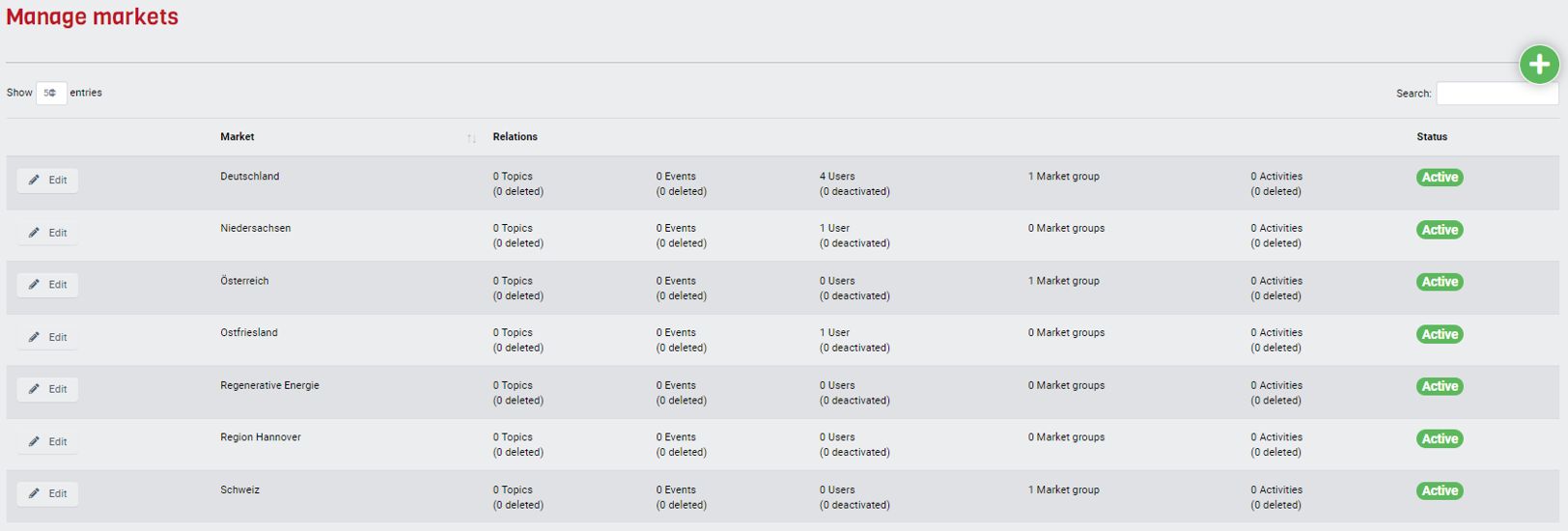“Editor-in-Chief” roles have (limited) access to “backend”. There, new user profiles can be created. You can also manage tags, activity types, activity groups, campaign sets, units, markets, market groups, sticky events, event types, and event sets.
Below you will find an explanation of the individual areas.
1.1 User
By clicking on “Create user” you add new users. In the template that opens, you must provide the new user’s first and last name and e-mail address. Confirm your entry with a click on “Save”.
With the buttons “Edit” and “Deactivate” you can edit information or set users to “Inactive”.
1.2 “Tags”
In this area, you define the “tags” (keywords) that are to be used in your “newsroom”.
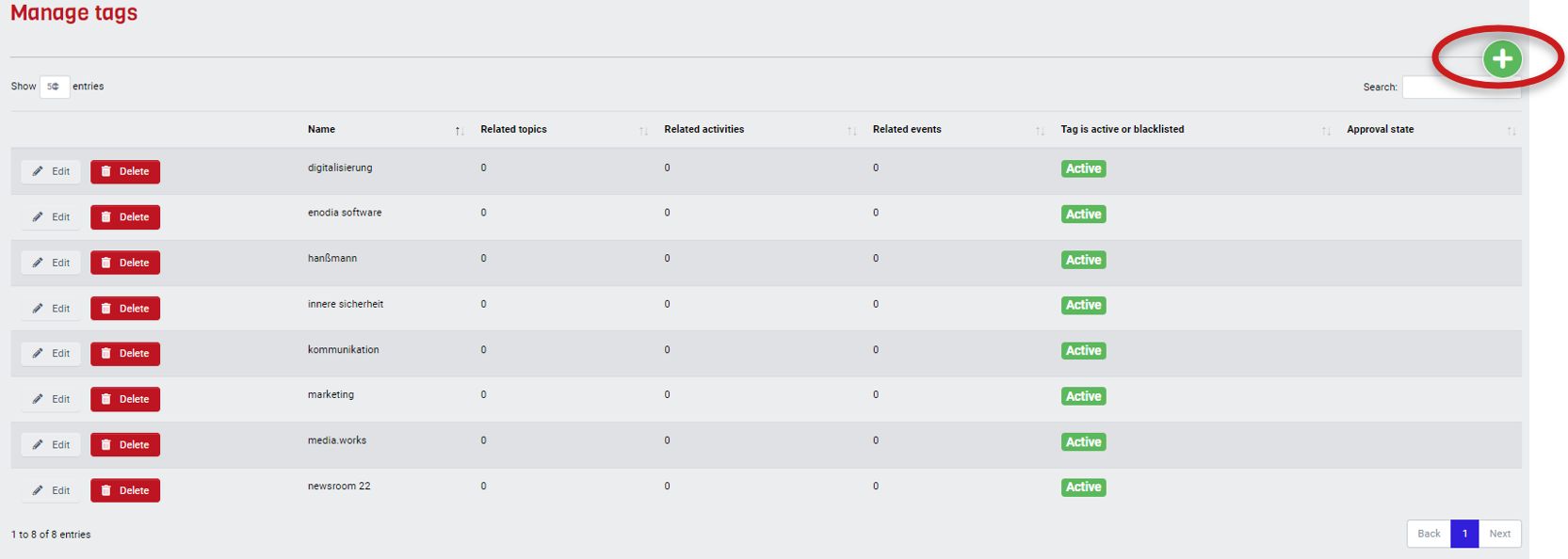
1.3 Activity Type
Here you define the activity types used in your company, e.g. press release, Twitter, management info, etc. By clicking on “Create Activity type” you create a new activity type.

1.4 Activity Groups
Activity groups can be used to summarize activity types, for example all social media activity types. This allows you to select all corresponding activity types for the filtering “My Media” in the calendar view in the personal profile by clicking on an activity group.
1.5 Campaign Sets
You create sets containing the most frequently used “Activities” in your company as “Campaigns”.

1.6 Units
You can manage the units of your company that are relevant for the organization of your communications activities. These are available for selection in the templates and filters.
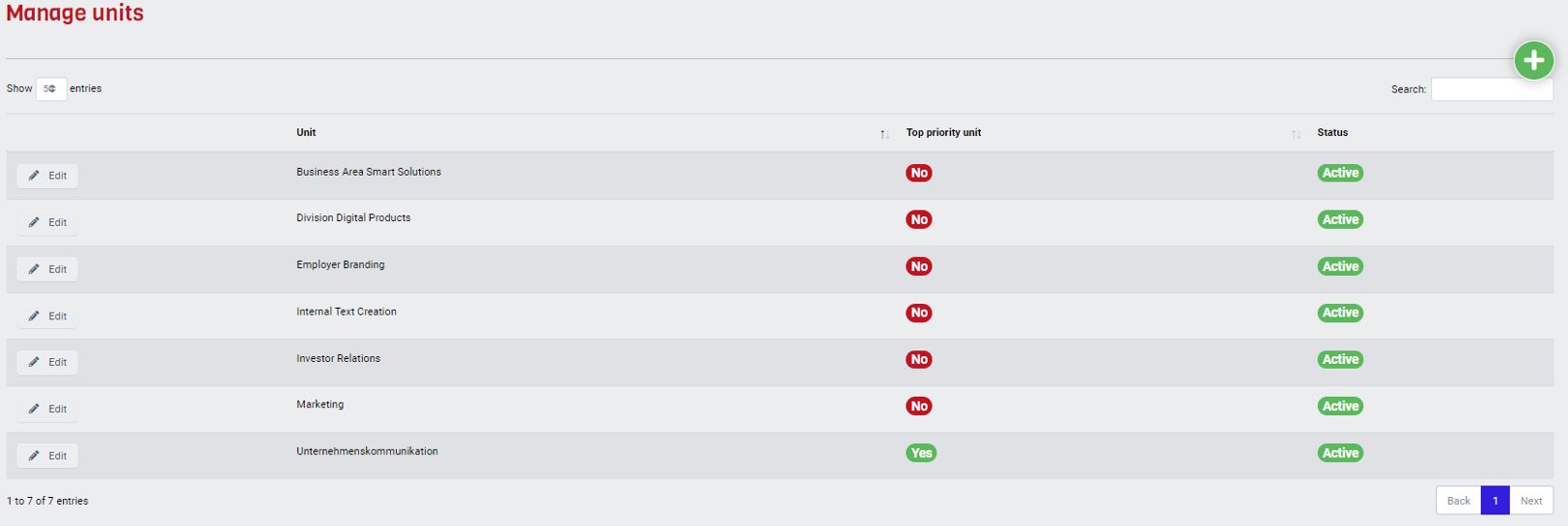
1.7 Markets
You can manage the markets of your company. These are available for selection in the templates and filters. Markets can be countries, but also regions (e.g. northern Germany, southern Germany), districts in a large city (e.g. Waterfront, Mid Town, Market Square) or product groups (e.g. Energy, Water, Network).
1.8 Market Groups
You can define the market groups of your company, e.g. DACH (Germany/D, Austria/A, Switzerland/CH). These are available for selection in the templates and filters.
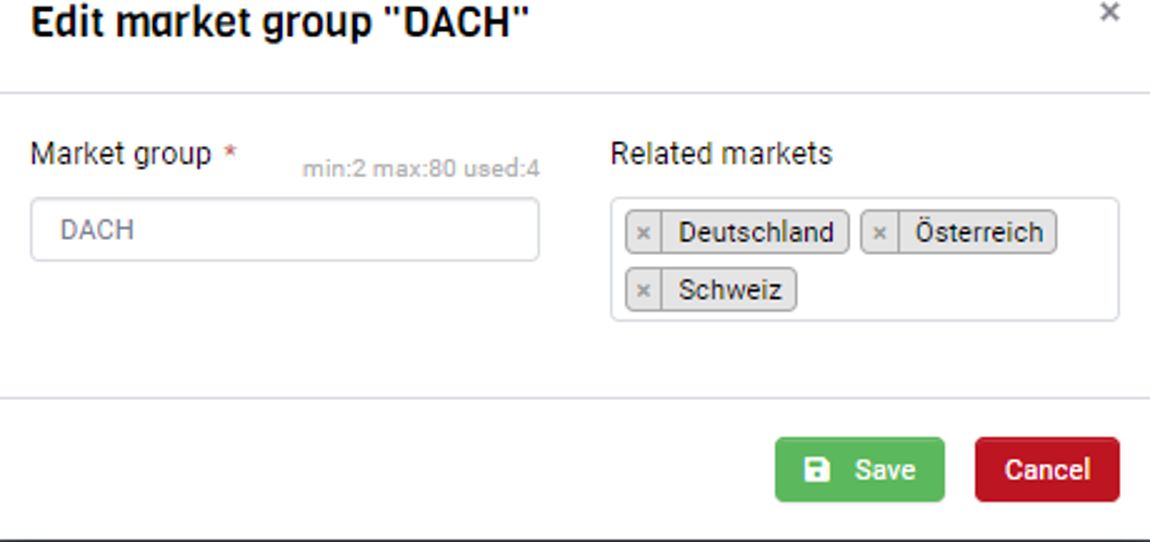
1.9 Sticky Events
Sticky events are events that are displayed to all users in the system but cannot be changed by them. This is suitable, for example, for “quiet periods” or for management meetings, communications workshops or holiday blocks – i.e. appointments that are important for communications and scheduling.
1.10 Event Types
You can define the types of events used in your company, e.g. press conference, trade fair, interview, etc. By clicking on “Create new event type” you create a new event type. These are then available for selection when creating a new event in the corresponding form.

1.11 Administration of addition functions
In the Administrator role, media.works employees can also change the following settings as a service in “newsroom”:
- Lead topics: Strategically important key topics to which “Topics”, “Campaigns”, “Activities” and “Events” can be assigned. This enables the option to analyze quickly how many “Topics”, “Campaigns”, “Activities” and “Events” belong to a strategically important key topic.
- Status for “Activities”: By default, “newsroom” contains the statuses “Created”, “Accepted”, “In Progress”, “In Coordination”, “Done”, “Archived” and “Rejected”. These status designations can be adjusted per customer.
- Unit Groups
- Target Group Cluster
- Languages: Manage the languages relevant to your communications activities, e.g. for translations.
- Countries: Manage the countries relevant to your communications (not: markets).
- Manage templates: Controls structure of the templates and names of input fields.
These functions can be managed only by media.works employees. Please feel free to contact us if you want to change administration settings.
